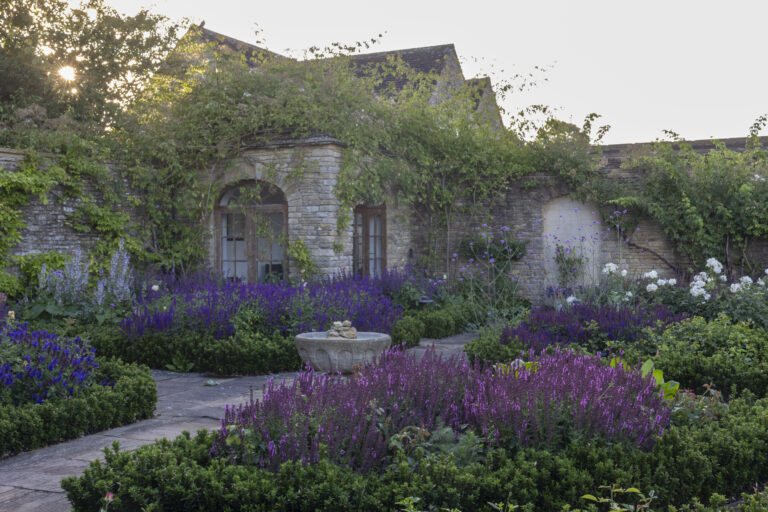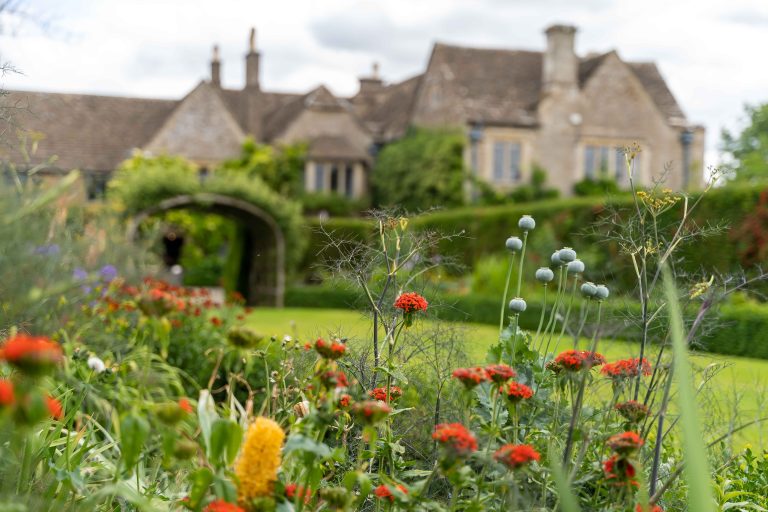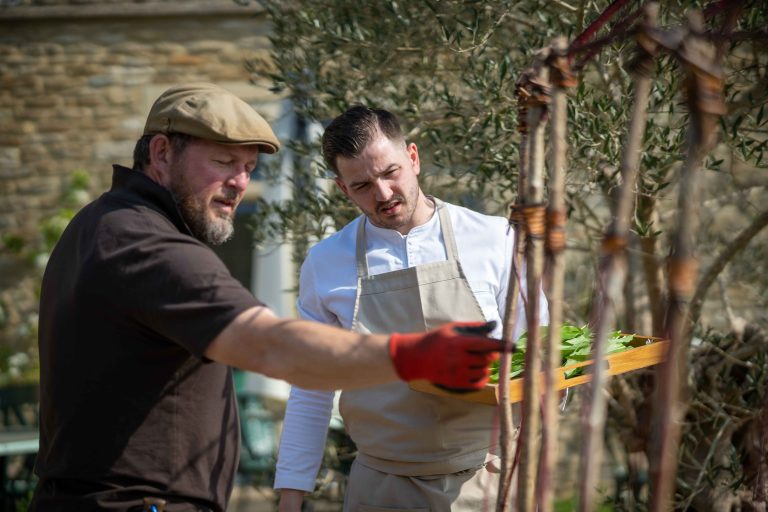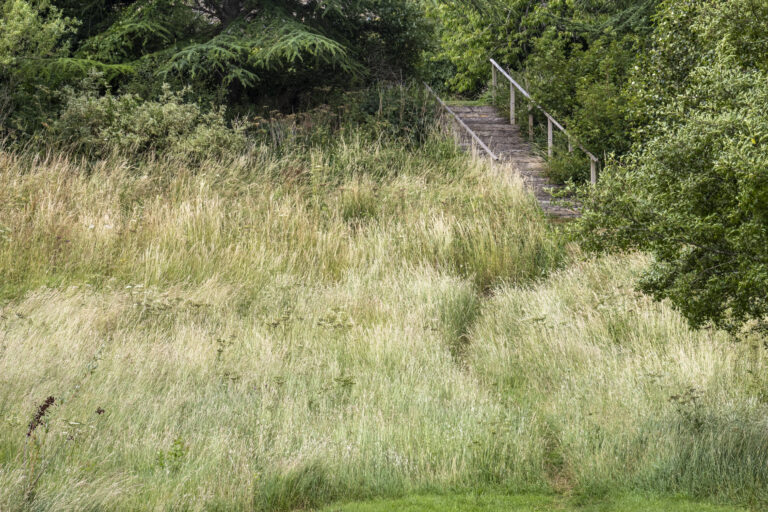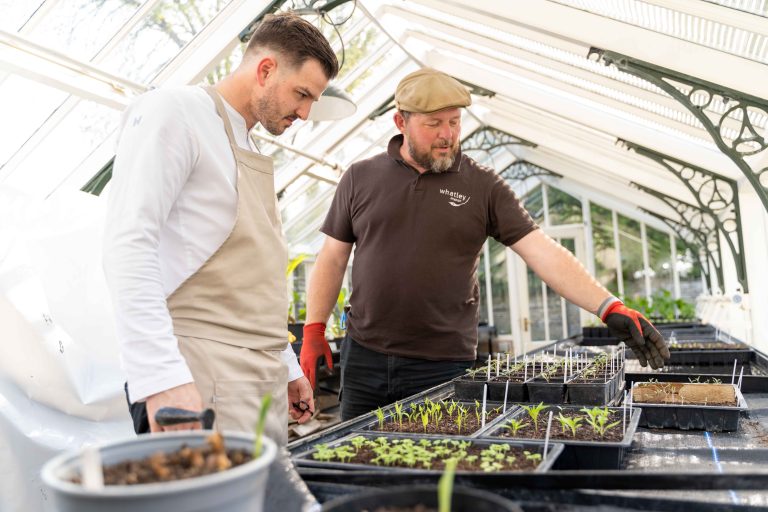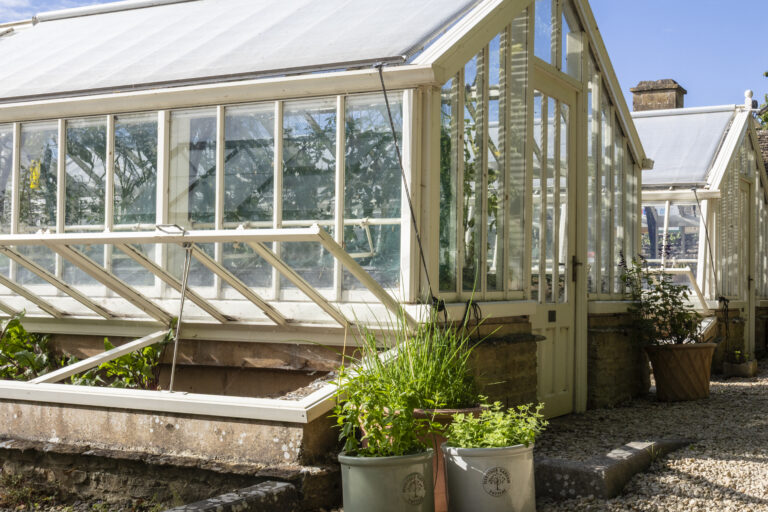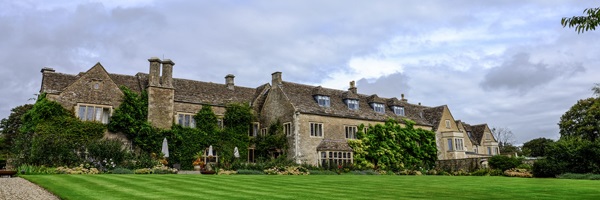The Gardens at Whatley Manor
The manor house at the heart of Whatley is a Grade 2 listed building with a history dating back to the 18th Century when it was very much a working farm. When H. C. Cox purchased the estate in 1925 the house was extended and the ornamental gardens and parkland areas were created. Designed by the architect Septimus Warwick, he favoured the Arts and Crafts style, popular in the Cotswolds at the time and this was evident in the design of each of the 22 garden rooms.
Over the year’s trends in garden planting and maintenance evolve and this has impacted on the design of each area. Our current custodians are focused on restoring the garden to be as true as possible to their 1920’s origins.
Exploring the Gardens and Grounds
Throughout the gardens, each area features a clearly placed QR code that you can scan with your smartphone. This will guide you to a webpage offering, detailed insights into the planting choices, design themes, and ongoing care for that specific area.
GARDEN NEWS FROM THE TEAM
Our garden team have a close working relationship with the grounds and wildlife of Whatley. They know where you will find the most rare and beautiful species and the best spots to visit throughout the year. Each season they provide a guide to help you enjoy our gardens and learn a little more as you explore them.
No-dig kitchen gardening
This allows us to produce the highest quality fruit and vegetables by working with nature, rather than against it. Reducing how much we break the soil in between crops reduces soil erosion, nutrient leaching, emissions and weeds. By encouraging the beneficial, symbiotic interactions between mycorrhizal fungi and plants, we are growing more healthy plants, resulting in a higher overall yield of higher quality crops, with fewer pests and diseases, and a subsequent elimination of the use of artificial pesticides.
Wildflower meadow
Since World War 2, 97% of UK wildflower meadows in the UK have been lost. Traditional meadows, which once would have covered a large amount of our pre-domesticated country, provided a plethora of habitats, food and shelter for a wide range of flora and fauna. At Whatley, we manage our wildflower meadows as our ancestors have for centuries by the non-emitting, ecologically sympathetic, and Pilates-replacing use of the scythe. Around the beginning of august the garden team cut and collect the last 6 months of growth, which has by now dried and the seed dispersed back into the soil or been eaten by the Whatley wildlife.
Glasshouses
Our Victorian Alitex glasshouses offer an opportunity to witness some the rare and unique flora we have in our collection at Whatley. Our glasshouses get a lot of use through the seasons; our horticulturists not only grow a wide collection of plants from around the world, but also cultivate fruit and vegetables including luffas; cucumbers, tomatoes, chillies, aubergines, and Cape gooseberries. This is also where the vast majority of our plants are propagated. Plant propagation is far more sustainable when it is done in house and with our highly skilled team, we do our utmost to maintain the garden and collection as self-sufficiently as possible.
Compost bays
One of the most important parts of a sustainably managed garden; this is where the magic happens. By putting most of our garden waste back into the garden we are maintaining nutrients similar to how an ecosystem would naturally. Our compost bays typically take between 6-8 months to break down fully, we add soft herbaceous garden material, cardboard and a little bit of woodchip to help aerate the heap. This will eventually go back into the garden, helping to feed the fruit and vegetables in the kitchen garden.
The Stable Courtyard
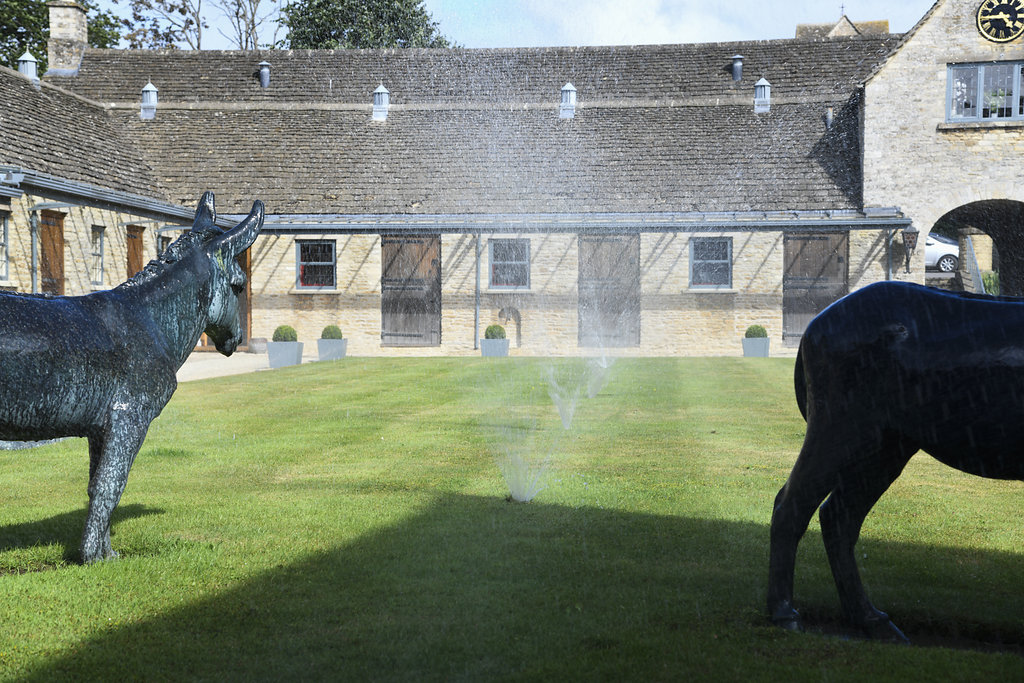
The Stable Courtyard has a neatly mown lawn proudly displaying three bronze donkey sculptures by renowned European sculptor Edouard-Marcel Sandoz – Christian de Coulon’s (the owner) Great-Grandfather.
The Herbaceous Garden
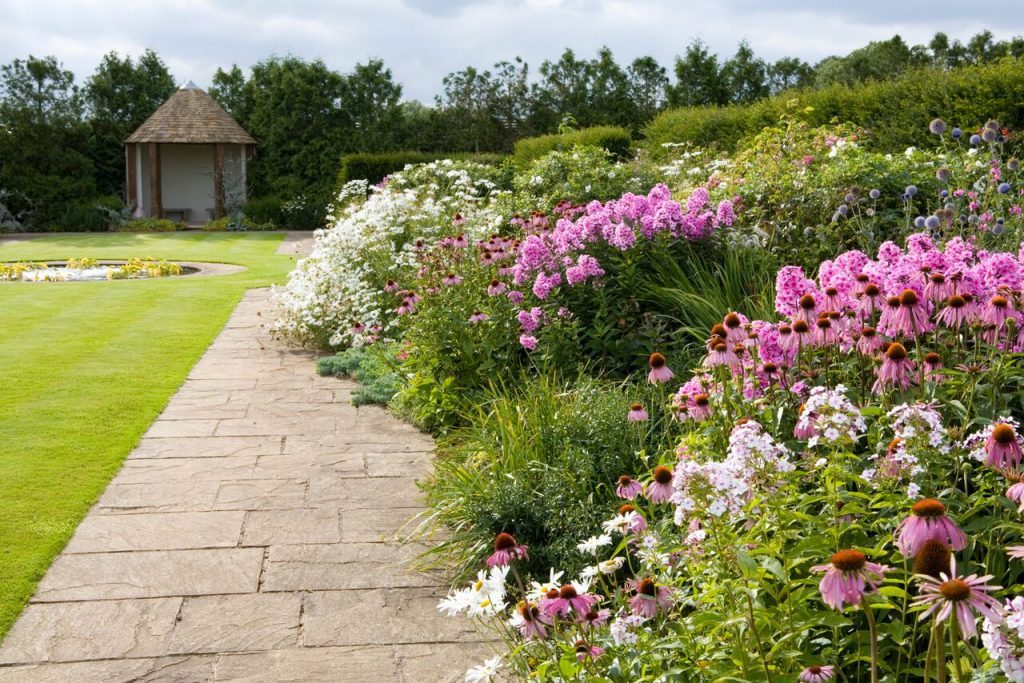
The Herbaceous Garden has manicured lawns flanked by stone paved pathways drawing guests past a fountain and pool to a Cotswold stone gazebo.
The Rose Garden
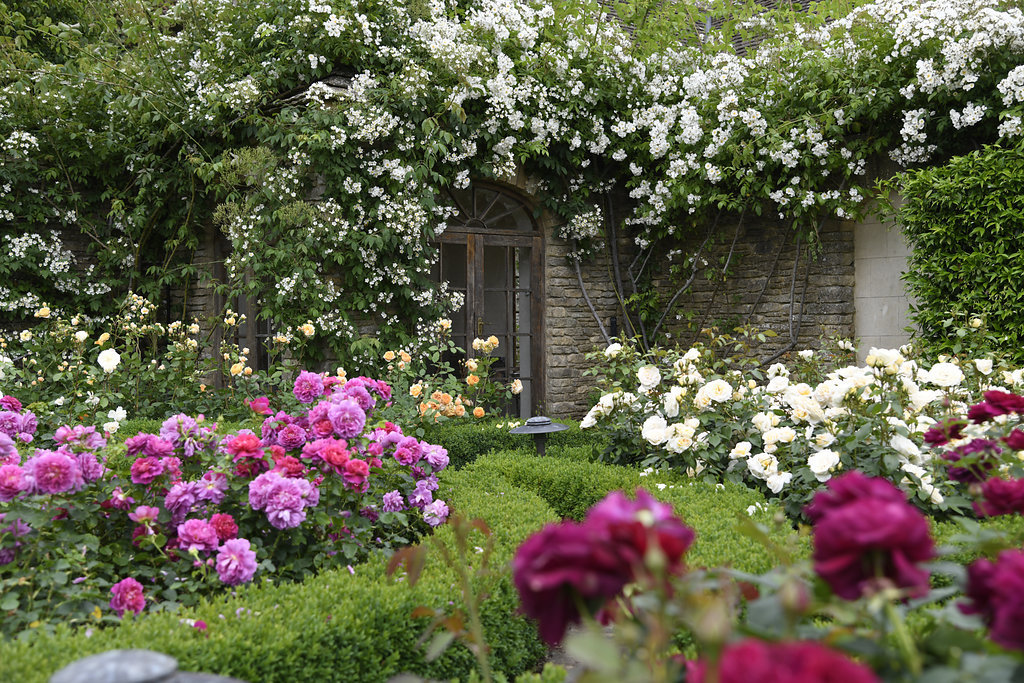
Enclosed within stone walls featuring an elegant central fountain providing movement and two corner arbours, this garden provides an ideal hideaway for a quiet moment during a warm spring or summers day.
The Loggia Garden
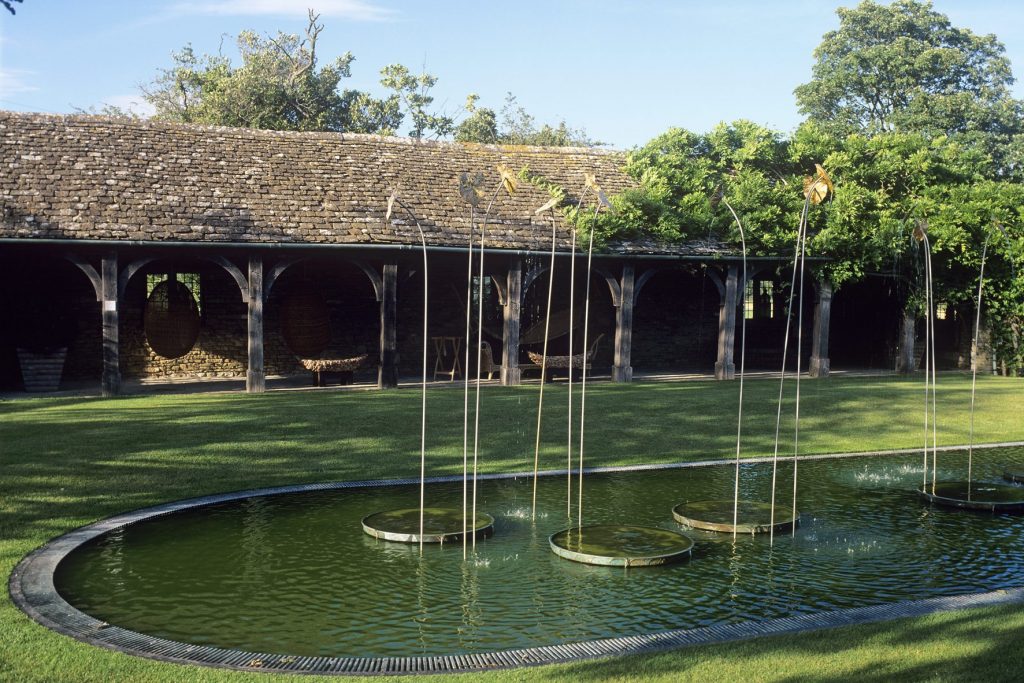
Simon Allison, sculptor and pool designer, was commissioned to create a contemporary sculpture for the centre of the Loggia Garden pond making this the ideal spot to take in the stunning vistas of the surrounding Wiltshire countryside. The Loggia Garden is also licensed for weddings.
The Hot Garden
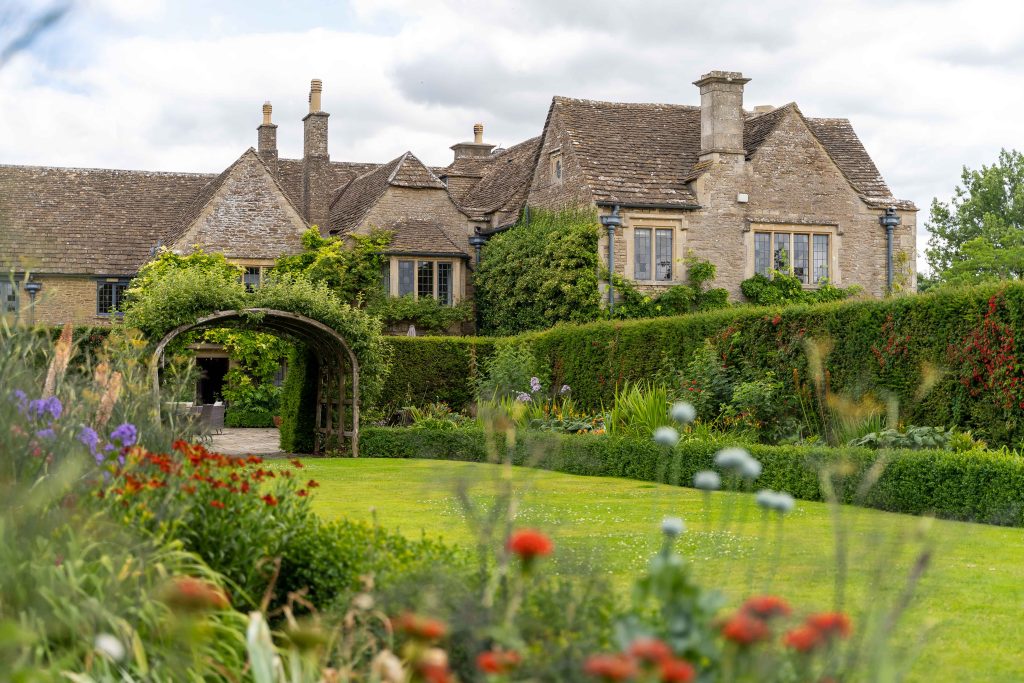
Inspired by more tropical climates and sun-seared landscapes, in the Hot Garden you will find vibrant colour combinations including hot reds, burnt oranges and dark chocolate.


